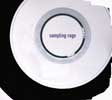
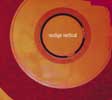
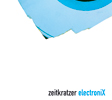

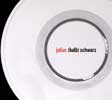
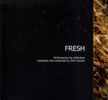

|
sampling rage
produced by Manfred Klauß and Elke Moltrecht
artists and repertoire: Dieter Scheyhing
recording: musicians Mastering: Michael Walz Executive producer: Elke Moltrecht Special thanks to Julia Heimerdinger This release is a result of the MontagsMusik "Sampling Rage” that took place in 1998 and 1999 at Podewil, curated by Elke Moltrecht and Dieter Scheyhing. All of the pieces on this disc were created by musicians who performed during the project and who continued their collaboration with Podewil after its conclusion. This sustained contact between curators and artists made it possible to present not only a recording of the live performances, but the mixes that were later developed from that material. steve roden
heizlüfter (slight return)
"heizlüfter (slight return)“ is an extension of the work "heizlüfter" that i presented at the mondaymusic sampling rage in 1999. originally, i transformed the soundtrack of a video tape recording of a small parabolic space heater being turned on and off, along with the sounds of cactus, my voice, and the stage floor and table top. it took me a year of using the heater to keep my painting studio warm, before i realized how much i was listening to the thing every time i turned it on and off, for this recording, i wanted to create more of a 'solo' piece using the heater's voice and nothing else. the beginning and somewhat 'constant' throughout the piece is an untreated loop of the heater. other sounds are added as the heater's voice is processed improvisationally with simple electronics, delay pedals, etc. while there are many sound colors present, the actual changes in sound are rather minimal – only pitch shifting and fragmented looping. the piece is simply an exploration of an overlooked sound from everyday life. (steve roden) Terre Thaemlitz
couture cosmetique
It has been suggested by myself and others that certain subgenres of what has come to be known as Contemporary Ambient music propose a complication of cultural processes by subverting the spectacle of melody and questioning the social functions of active and passive listening techniques. Similarly, while the genre remains dominated by male producers and cannot claim to transcend the conventional heterosexism and gender biases of the electronic music industry, it incorporates discourses which involve the active disclosure, inversion and convolution of sonic and experiential relationships. The result is a vehicle of layered contents and contradictions that extend to the very manner in which it allows for the generation of multiple political discourses while most forums for reception are despairingly a-political and Humanist in tone (an often frustrating passive-aggressive circumstance). To exemplify this concept of contingency upon the contradictory, the sounds developed for "couture cosmetique" emphasize residual noises produced by some of today's more popular digital synthesis techniques – including granular synthesis, pitch/time convolution and heterodyn filter analysis – bringing into focus those sounds which currently exist in a repressed state at the periphery of popular contemporary music production. In this manner, the limitations of such audio technologies are used to intimate new functionalities which remain excluded or omitted from popular development – a metaphor which may be applied to the construction and utilization of Post-Industrial technologies in general. (Terre Thaemlitz) Brandon Labelle
Peregrination & Surplus
(squibs on the face of reality) Noise is a kind of pressure against the codes that determine how things take place (language, social behavior, gender roles, etc.), how possibility becomes reality, and how the imagination gets situated within the broader scope of perception (the actual vs. fantasy). As a pressure it necessarily demands reaction – it presses against and in this instigates motion, drives things to an unstable equilibrium, to a brink from which some alteration occurs: an opening, a scission, a cut, a glich, a break, a fraying, a con-fusing. Noise can be defined as that which causes this disruption, as anything that challenges the stability of codes, the equilibrium of how things occur (and as that which infringes upon the flow of these words as comprehensible/a feverish rupture, or a quiet pause...). Yet in using Noise as a term – a referent in the articulations and events of body and mind: punctuations out of place! – it offers an alternative code, one which is chaotic because it invites and promotes interference. It announces itself as a bubbling up, not necessarily spontaneous, but rather as peregrination, a flight which, rather than leaving behind the stuff of reality, digs deeper into the matter of structural delineations – the stitching that holds together social and personal fabric. From here though, Noise provides a productive link between the unconscious and societal norms, between the imaginary (the beating of private desire) and the construction of reality, between the agitations of the body and the forms of media. It is that vacillating tension stretched across the distance that divides (however necessary) identity into the idiosyncratic and the societal – Noise allows the articulation of their meeting, for even in challenging the codes one reaches out to an audience. (Brandon LaBelle) Boris D Hegenbart
disturbtone
Disturbtone, the re-working of musicforcicadas, is an attempt at breaking through the rigid structures of a sampler to perceive an image of the moment. It was my facination for constant sound transformations that led me to manipulate my old sampler so mechanically that the sample is scanned bit for bit, allowing one to wander through the sound. While I used 6 samplers for the live performance during the MontagsMusik "Sampling Rage” in Podewil, the present version of musicforcicadas is a production that was created mainly in the computer. What remains is the image of the cicada – whose noise penetrates through the rocks. The acoustic power of nature chafes against the angular form of digitally dissected speech. The voices belong to the Japanese students, Naoko, Kengo and Natsumi. Musicforcicadas appeared on the CD hikuioto (1997) and represents the acoustic part of a sound/light installation that took place in a weeping willow. (Boris D. Hegenbart) improvisation
Christophe Charles/Brandon LaBelle/steve roden
The sampling rage cross collaboration between the four participants: Markus Popp, Steve Roden, Brandon LaBelle and myself, had been suggested by Dieter Scheyhing. We divided the collaboration into two parts, one with Popp and myself, and one with Roden, LaBelle and myself. I had set up my equipment so that it would be possible to receive sound sources from Steve and Brandon and sample them while mixing together other soundfiles stocked in my computer. (The technical and conceptual principles that I use in sampling and timing are described on the web page: kubric.musabi.ac.jp/charles.) These collaborations were part of a series of works in progress: the first collaboration with Steve and Brandon had happened at Kobe Design University in 1998 and a part of it has been released on the Fuji compilation by Cha-Bashira Records (Tokyo). Another collaboration with Brandon happened in Tokyo (2000) and has still to be processed in order to be released. The whole could be described as the confrontation between concrete sounds (i.e. related to a particular real/physical situation or object) and abstract sounds (i.e. elaborated by electronic treatment), or recorded sounds (i.e. borrowed from different soundspaces) and live sounds (i.e. happening in real time during the concert, emanating from a direct action on objects, or from a system comprising vibrating objects). We selected and produced these sounds in real time during the performance from an array of materials which had been determined in advance according to a common sensibility and interest in "letting the sounds be (heard for) themselves", that is, by paying close attention to the actual sounds as well as to the interval between them. The activity of producing and listening to sounds preserved the very fragile balance between the different sound sources, so that no element could dominate the others. (Christophe Charles) Translations: Laurie Schwartz |

